![]()
This page is also available in French
![]()
The monumental basilica of the Panthéon has a complex history: it originated as a church, but its function was changed subsequently to that of a civic monument, which it now retains.
In 1744, following a serious illness whose cure he attributed to Sainte Geneviève, the patron saint of Paris, Louis XV made a vow to dedicate a prestigious building to the saint on the site of an ancient basilica where she had been buried in 512 (the basilica had been founded in 507 by King Clovis to serve as tomb for himself and his wife Clotilde). The design of the new basilica was entrusted to the architect Soufflot in 1755. The first stone was laid by the king in 1764. Soufflot died in 1780 and his associate Rondelet completed the building in 1790.
Under the French Revolution, the Constituent Assembly decided by a decree on 4 April 1791 to transform the basilica into a temple destined to accommodate the remains of the great men of the Nation. The architect Quatremère de Quincy was put in charge of adapting the building to its new role as national Panthéon. It is the crypt that accommodates the vaults that are the resting place of great public figures.
Twice in the course of the 19th century, the huge sanctuary was restored to its Christian vocation before finally being re-invested with its role as civic temple in 1885. In that year, in the midst of the considerable emotion aroused by his death, only the gigantic basilica seemed worthy of receiving the remains of Victor Hugo. Since then, twenty seven illustrious French figures, politicians, writers, scientists, and members of the Resistance, have been buried there and have thus received the honours of the temple of the modern nation. Among these are Emile Zola, Jean Jaurès, Félix Eboué, Victor Schoelcher, Jean Moulin, René Cassin, Jean Monnet, Marie and Pierre Curie, André Malraux, and Alexandre Dumas.
In 1903 Julien Tiersot called for Berlioz’s remains to be moved to the Panthéon. In 1908 Le Petit Journal organised a competition to put forward candidates for transfer to the Panthéon, and the name of Berlioz was among them. Half a century later Professor Barzun echoed these moves: ‘If a real desire exists to celebrate Berlioz’s memory otherwise than by playing his music, there is in Paris a roomy public building on the pediment of which is written Aux grands hommes, la patrie reconnaissante [To great men, the grateful fatherland]. Exhume Berlioz and place him in the Panthéon with his peers’ (Berlioz and the Romantic Century, vol. 2, 1950, pp. 325-326).
The idea had been proposed to President de Gaulle in 1968 by André Malraux, the Minister of Culture, following a suggestion by Jean Boyer (a Deputy at the National Assembly, and the founder and president at the time of the Berlioz Festival at La Côte Saint André), and President de Gaulle had accepted the proposal.
But de Gaulle’s resignation in 1969 put an end to the project for many years. In 2000, in the light of the forthcoming bicentenary of Berlioz in 2003, the project was revived and President Chirac gave his agreement. It looked as if Jacques Barzun’s wishes were about to be fulfilled. Berlioz’s remains were scheduled to be moved to the Panthéon on 21 June 2003, and the Orchestre de Paris would play the Symphonie Funèbre et Triomphale in the streets of Paris for this occasion. But the project has now been cancelled altogether.
In the event, the only official ceremony to celebrate Berlioz’s bicentenary was a grand concert organised by the Paris city hall on the Place de l’Hôtel de Ville on 21 June, France’s national day of music [Fête de la musique]. The Musique des Gardiens de la Paix de la Préfecture de Police, the Orchestre d’Harmonie du Conservatoire Supérieur de Paris, the Orchestre symphonique du Conservatoire supérieur de Paris and 2000 school children performed Berlioz’s music at this concert. You may read a review of this event (in French) by M. Pierre Panet in the review section of our site.
In late November we invited our friends and visitors to join us in paying homage to Berlioz on his 200th birthday, 11 December 2003. On that day we placed a bouquet of flowers on Berlioz’s tomb at the Montmartre Cemetery and tagged to it a list of those who had given us their names. We have created a special bicentenary homage page which includes the list of names and a few photographs of Berlioz’s tomb taken on the day: Homage to Berlioz.
We are grateful to M. Jean-Michel Desai for the background information concerning the decision to move Berlioz to the Panthéon.
![]()
All the modern photographs reproduced on this page were taken by Michel Austin; other pictures have been scanned from engravings and postcards in our collection. © Monir Tayeb and Michel Austin. All rights of reproduction reserved.

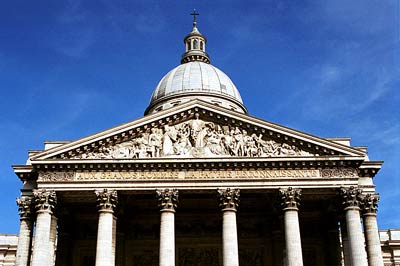
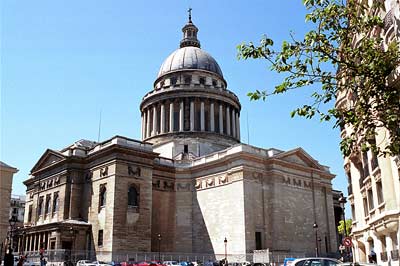
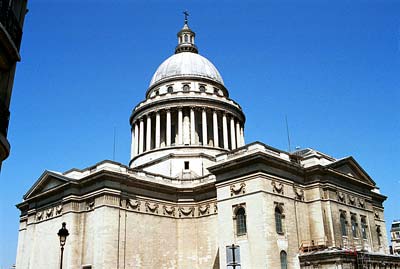
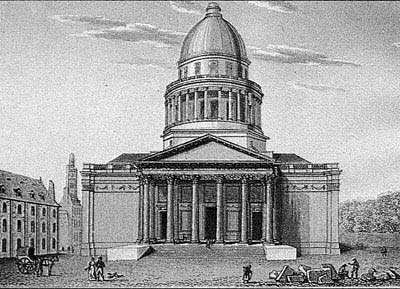
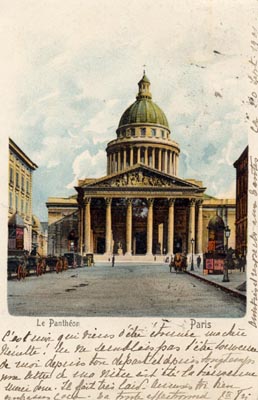
This picture has been scanned from a 1901 postcard.
![]()
© Monir Tayeb and Michel Austin for all the pictures and information on this page.
Copyright notice: The texts, photos, images and musical scores on all pages of this site are covered by UK Law and International Law. All rights of publication or reproduction of this material in any form, including Web page use, are reserved. Their use without our explicit permission is illegal.